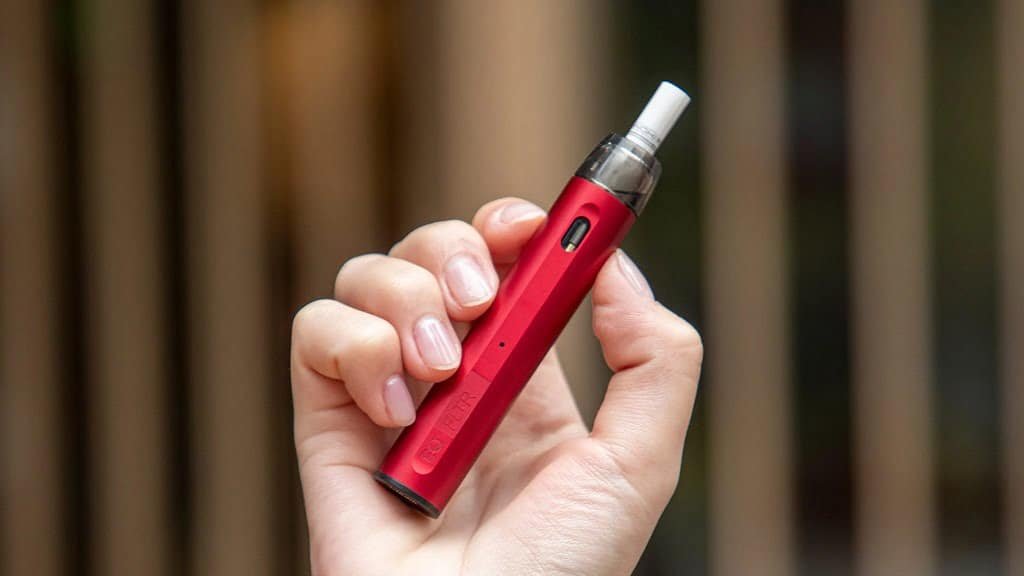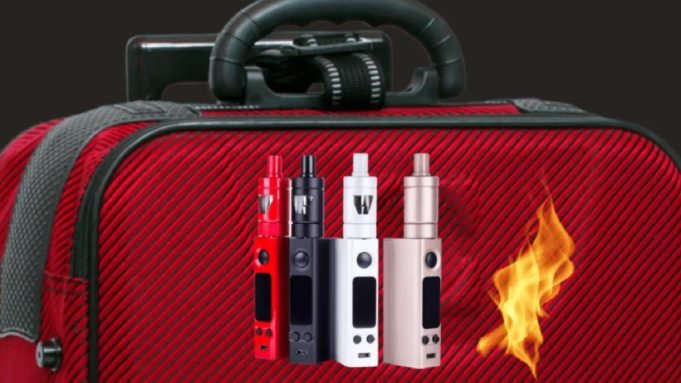What Happens if You Put a Vape in Checked Luggage? Over the past few years, there has been a significant uptick in the popularity of vaping and e-cigarettes, marking a shift in the world of smokers and nicotine enthusiasts. From the neon-lit corners of urban streets to cozy suburban homes, you’re likely to find someone engaged in the act of vaping. The modern aesthetic, coupled with the promise of a “healthier” alternative to traditional cigarettes, has made vapes a favorite for many.
However, with this surge in usage comes a slew of misconceptions, particularly when it comes to traveling. A common scenario that puzzles many vape users is the protocol for traveling with their devices. Can you just toss it in your checked luggage and be on your merry way? Or are there specific regulations and risks involved? As we delve deeper, you’ll see why the latter is more accurate.
What Happens if You Put a Vape in Checked Luggage?

For those unaware, e-cigarettes cannot be stored in checked luggage. They are permitted in carry-on bags, though. Placing them in checked baggage might lead to missed or delayed flights.
This restriction arises because vapes operate on lithium batteries, known for their flammability. Airlines typically avoid storing such batteries in the plane’s cargo for safety reasons.
You’re allowed to have vaping devices in your carry-on, and you can also carry e-liquid with you. However, ensure the liquid doesn’t exceed 100 ml.
When traveling, consider factors like Where in the airport is vaping permitted. Can you vape during a flight? And is vaping legal in the destination country? We’ll delve into these queries below, offering guidance on hassle-free travel with your vape.
Safety Concerns with Vapes in Checked Luggage
At the heart of the vape device is its power source: the lithium-ion battery. These batteries are favored for their longevity and ability to hold a charge, but they come with their own set of potential hazards. When punctured, damaged, or exposed to certain conditions, lithium-ion batteries can overheat and lead to what is known as “thermal runaway.” This can result in a fire or even an explosion (Lopez, A., 2021).
This brings us to the concerning history of vapes in checked luggage. There have been documented cases of vape devices catching fire in the cargo hold of planes. In one incident, a vape that was accidentally activated in a passenger’s luggage caused a fire in the plane’s cargo hold. Thankfully, it was detected in time, and no one was harmed (BBC News, 2019). Such incidents, though rare, underscore the gravity of the situation and the importance of following airline and security regulations concerning vapes.
Related: Can You Bring Cigarettes on a Plane
Airport and Airline Regulations
Navigating airport regulations can sometimes feel like maneuvering through a maze, especially with items that have specific guidelines like e-cigarettes and vapes. One of the primary governing bodies setting standards for U.S. travel is the Transportation Security Administration (TSA). According to the TSA’s official guidelines, passengers are prohibited from packing e-cigarettes, vapes, and similar devices in their checked bags. However, they are allowed in carry-on bags and may also be carried on the person (TSA, n.d.). This decision largely stems from the potential fire risk associated with the lithium-ion batteries in these devices.
Yet, while the TSA provides a foundational guideline, it’s imperative to remember that individual airlines might have their own specific policies. For instance, some airlines may have restrictions on the amount of e-liquid you can bring, or they might provide specific storage instructions. Moreover, international regulations can differ considerably from U.S. standards. When flying abroad, it’s always wise to check both the departure and destination country’s regulations, as well as those of the airline you’re flying with.
Potential Consequences for Violations
Flouting the rules doesn’t come without its fair share of repercussions. One of the most immediate consequences travelers might face is the confiscation of their vape or e-cigarette. Security personnel are trained to remove any items from luggage that pose a potential threat, and an improperly stored vape falls into this category.
But the ramifications don’t stop at just losing your device. There could be potential fines or even legal consequences depending on the severity of the violation and the specific regulations of the country or state you’re in. In some places, carrying forbidden items can lead to hefty fines or even a court appearance.
Lastly, encountering issues at security checks can lead to significant delays. If your luggage is flagged for a manual check due to a vape, you might find yourself held up for longer than anticipated. In worst-case scenarios, this could lead to missed flights, rebooking hassles, and a disrupted travel plan.
In conclusion, the key takeaway is always to be informed and prepared. With proper knowledge and adherence to guidelines, you can ensure a smoother journey for yourself and your fellow passengers.
Best Practices for Traveling with a Vape
Traveling with a vape doesn’t have to be a stressful experience. With a little foresight and some preparation, you can ensure your journey goes off without a hitch. Here are some best practices to consider:
Keeping Vapes and E-Cigarettes in Carry-On Luggage: The TSA and many international security agencies advise travelers to keep their vapes and e-cigarettes in their carry-on bags. This is primarily because of the potential fire hazards associated with the lithium-ion batteries in these devices. In the unlikely event of a device malfunctioning, it can be addressed swiftly in the cabin, whereas in the cargo hold, it might lead to bigger problems (Johnson, L., 2021).
Proper Storage of the Device and E-Liquids: Make sure your device is turned off and, if possible, store it in its original packaging or a protective case. This can prevent accidental activation. For e-liquids, using leak-proof containers and sealing them in clear, resealable plastic bags can prevent spills and potential messes. Always be mindful of liquid restrictions when traveling internationally (Walker, A., 2020).
Notifying Security Personnel if Uncertain about Procedures: If you’re ever in doubt about the regulations or how to handle your vape during security checks, don’t hesitate to ask. Security personnel are trained to help passengers navigate these processes, and it’s always better to ask upfront than to risk potential complications later on.
Read More: TSA-Approved Quart Sized Bag
Conclusion
In today’s rapidly changing world, regulations and guidelines are continuously evolving. As such, the onus falls on travelers to stay informed and act responsibly, especially when it comes to potentially hazardous items like vapes. Not only does this ensure your safety, but it also contributes to the well-being of your fellow passengers and the smooth operation of air travel.
Before setting off on your next adventure, take a few moments to check the latest regulations pertaining to vapes and e-cigarettes. A little research goes a long way in ensuring a seamless and hassle-free journey. Travel smart, vape responsibly, and always prioritize safety.
Frequently Asked Questions (FAQs)
Here are some example frequently asked questions (FAQs) for the “What Happens if You Put a Vape in Checked Luggage”:
Can I sneak a vape in my checked luggage?
You are allowed to bring vaping devices such as vape mods and vape pens when flying. They can be placed in your carry-on luggage or kept in your pockets. However, it’s crucial to note that they should never be included in your checked luggage, especially if they contain lithium batteries.
Can airports detect vapes in luggage?
Both the TSA and airport security maintain a consistent policy when it comes to vaporizers and e-cigarettes. These items should not be packed with your regular checked baggage. If airport security detects your e-vaping device during the check-in process, they may confiscate it, irrespective of your age. In some cases, they might insist that you carry it in your hand instead.
Do vapes get flagged by TSA?
TSA permits travelers to transport vapes, e-cigarettes, and similar items within their carry-on bags. Nevertheless, packing such devices in checked baggage is firmly forbidden. Any vapes or e-cigarettes discovered in checked luggage will be seized by the TSA, as they present significant safety risks.
What Happens if You Put a Vape in Checked Luggage?
Placing a vape in your checked baggage can lead to several potential issues. Extreme temperatures in the cargo hold may harm the battery, and the device itself could suffer damage from any jolts or turbulence during the flight. Airlines may also confiscate the device if it doesn’t comply with their policies. Moreover, if there’s any e-liquid spillage or leakage inside the luggage, it could damage or render the device unusable.
Can you vape in airports and planes?
Vaping on any airline flight worldwide is strictly prohibited, and we strongly advise against attempting to do so. Instances have arisen where individuals who violated this rule were subjected to substantial fines.
Additionally, modern aircraft now feature smoke detectors to prevent vaping in restrooms. Consequently, it is highly discouraged. Furthermore, vaping is generally not allowed at airports, except in designated smoking areas. Thus, it is advisable to refrain from smoking or vaping while at the airport or during your flight.
















[…] Administration (TSA), disposable vapes are allowed only in carry-on bags and strictly banned in checked luggage. This policy exists because lithium batteries can pose a fire risk in the cargo […]
[…] plane, but it depends on how and where you pack them. The TSA allows scissors in both carry-on and checked luggage, but with strict regulations. In carry-on bags, scissors must meet specific size requirements. Any […]
[…] cologne can be packed in your checked luggage without size restrictions. Unlike carry-ons, there is no 3.4 oz limit for liquids in checked bags. […]
Comments are closed.